Koryo Books: Where K-Pop Fans and Book Lovers Converge in NYC
Established over 40 years ago, this Koreatown store has evolved from a community bookshop into a global cultural destination!


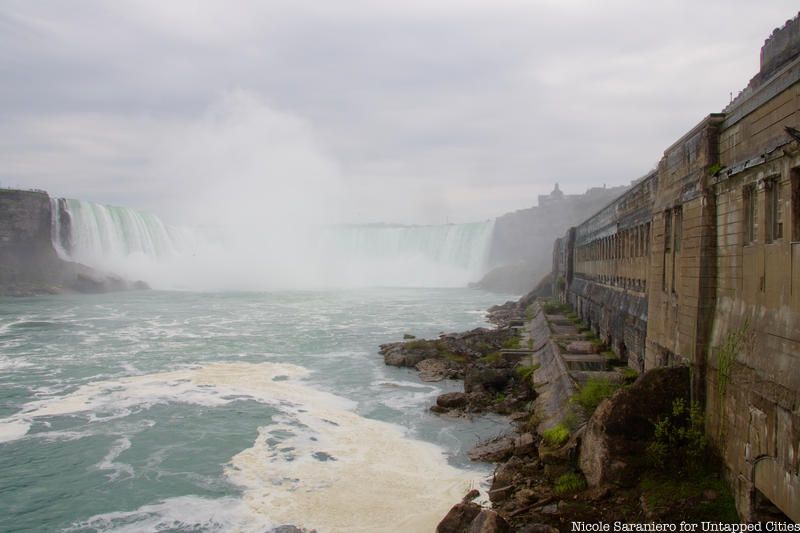
A view of Horseshoe Falls and the abandoned Ontario Power Company ruins on the right
From sea to shining sea the Untied States is filled with breathtaking natural wonders like the Grand Canyon, the redwoods of California, and the peaks of the Rocky Mountains. Lucky for us New Yorkers, one of America’s greatest natural treasures is right here in our home state. Less than a two-hour plane ride from JFK Airport, Niagara Falls is one of the most awe-inspiring sites in the world, and the perfect destination for a weekend getaway or a long road trip across New York.
Created by melting glaciers around 12,000 years ago at the end of the last Ice Age, the falls poured over the Niagara Escarpment in what is today the nearby town of Lewiston, New York. Over time, the force of the water wore away layers of rock to bring the falls to their current location. The recorded sighting of the falls was by French explorer Father Louis Hennepin in December 1678, though Native Americans were likely aware of the falls before then. In the ensuing centuries Americans harnessed the power of the falls in the form of hydroelectricity and the site has became an ultimate tourist destination for travelers from across America and across the globe.
There is a prevailing sentiment that “The Canadian side is better,” but while we admit a drive across the border is worth it for a different perspective which encapsulates all three falls – American, Horseshoe and Bridal Veil Falls – in one sweeping view, we are partial to the New York side. Untapped Cites recently took a trip to Niagara Falls courtesy of Microtel by Wyndham to discover the best classic and off-the-beaten path adventures that will fully immerse you in the area’s extraordinary natural beauty and fascinating history.
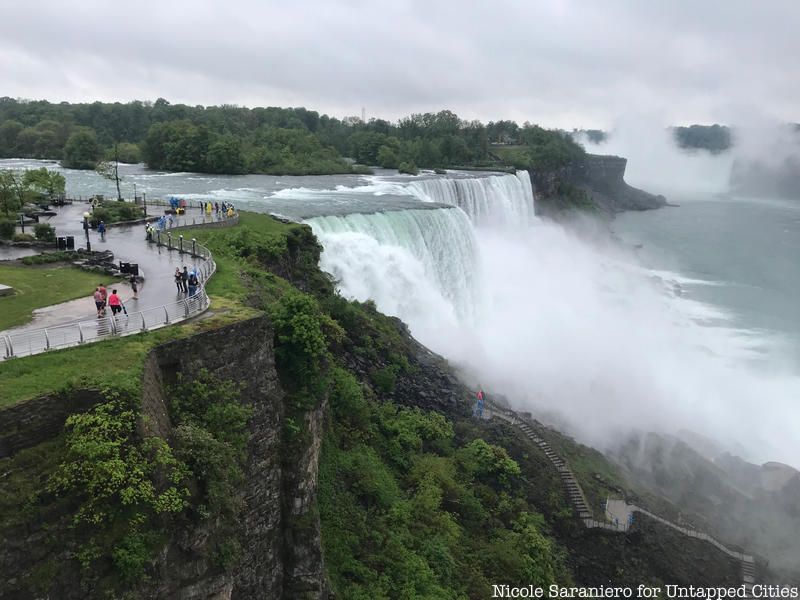
Looking down at the Lower Grove Trail at Prospect Point from the Observation Tower
Niagara Falls State Park is the oldest state park in America, boasting 400 acres of lush landscaping designed by Frederick Law Olmsted, the esteemed landscape architect who designed Central Park. This year marked the end of a five year nearly $70 million restoration project which used Olmsted’s naturalistic aesthetic while modernizing the park and making it more safe and accessible. The renovations also allow vistiors to get closer to the falls than ever before on new pathways and scenic overlooks.
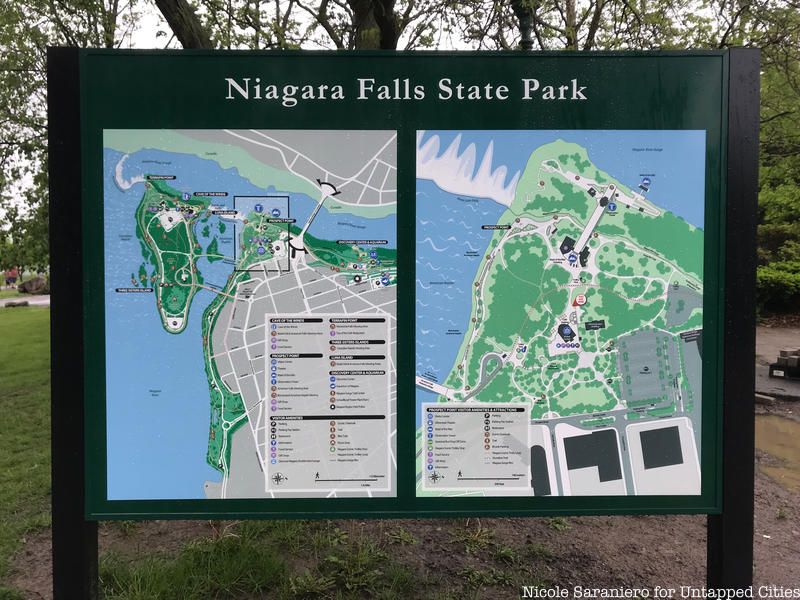
All of New York’s Niagara Falls attractions can be found within the park land. Begin your adventure at the Niagara Falls State Park Visitor Center where you can pick up the vintage-style Niagara Falls Scenic Trolley. The trolley is a hop-on-hop-off mode of transportation that shuttles visitors around a 3-mile loop of the park, stopping at viewing spots and attractions along the way, with on-board guides sharing information, historical stories and fun facts. It is very helpful when you are trying to get from the Niagara Gorge Discovery Center to the Bridal Veils Viewing Area or Cave of the Winds and don’t want to walk the nearly mile and a half between them. The park is open everyday of the year, twenty-four hours a day and contains multiple gift shops, food stands, restrooms and picnic areas that will serve your needs.
We like the emphasis on natural wonder that the New York side displays as opposed to the more ostentatious Canadian side which feels a bit like Times Square, immediately bombarding you with large signs for casinos, chain restaurants and attractions like a haunted house and wax museum. New York has its fair share of entertainment and nightlife beyond the scenic park too! After a day spent soaking in the majesty of the falls, head down Old Falls Street for restaurants, public spaces filled with giant interactive games, concert venues and public art.
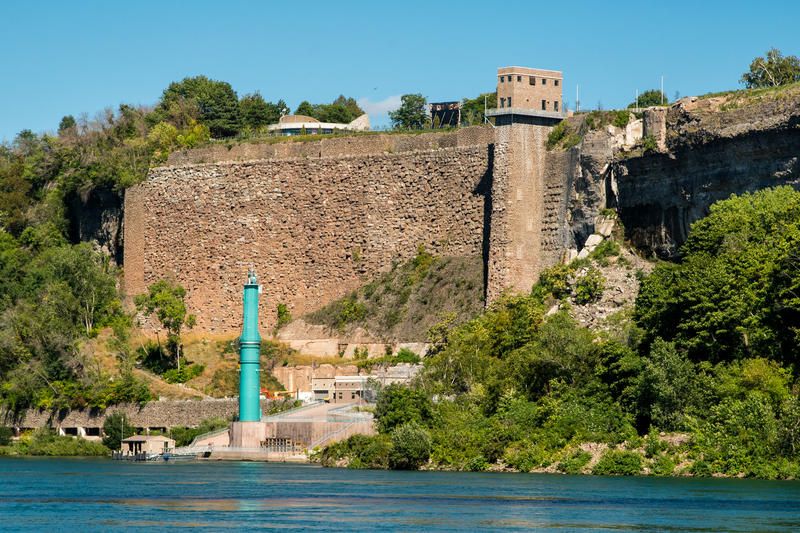
Photograph Courtesy of Destination Niagara
The power of Niagara Falls was first harnessed as hydroelectricity in the late 1800s by a plant on the Canadian side and greatly enhanced by George Westinghouse and Nikola Tesla‘s first large-scale hydro-electric power plant on the American side in 1895. Today, the falls still supply about a quarter of all the power used in New York State and Ontario and enable modern day plants to pump out millions of kilowatts of electricity. You can learn all about the electrifying history of the falls at the Niagara Power Vista just up the river from the falls in the nearby town of Lewiston, and you can see the physical remnants of early power plants at the falls themselves. On the Canadian side, next to Horseshoe Falls, you will notice the massive ruins of the Ontario Power Company Generating Station which was built in 1905 and abandoned in 1999. Unfortunately, this defunct site is owned by the Niagara Parks Commission and is not accessible to the public, but there are ruins on the New York side that you can explore.
The Schoellkopf Ruins are what is left of the Schoellkopf Power Station which was built at the top of Niagara Gorge between 1905 and 1924. At the time of its completion, it was the largest hydroelectric power station in the world. The complex contained offices, gatehouses and other buildings at the top of the gorge and turbine-generator stations at the base. The site is perhaps most famously known for its collapse. On June 7, 1956, water seeping into the back wall caused the southern two-thirds of the station, Powerhouses 3B and 3C, to fall into the Niagara River gorge. The disaster caused approximately $20 million in damages at the time and the loss of 450,000 kilowatts of power from the New York State power grid. The remaining Station 3A operated at reduced capacity for the next five years and was eventually torn down by Robert Moses as part of a beautification project in 1962. In 2013 the site was listed on the National Park Service’s National Register of Historic Places.
What you’ll see today is the last remaining stone wall, a trailrace (a channel that carries water away from a hydroelectric plant) and the restored elevator shaft. Visitors to the site can take an elevator down through the shaft to get to the bottom of the gorge where there is a lookout point to see the falls. The elevator is located near the Niagara Gorge Discovery Center and is a great place to end a hike along the gorge’s many beautiful trails. The ruins are also the winter storage dock for Maid of the Mist boats. When visiting the site you can see the large crane used to hoist the boats up from the river and you can watch that process during the winter months.
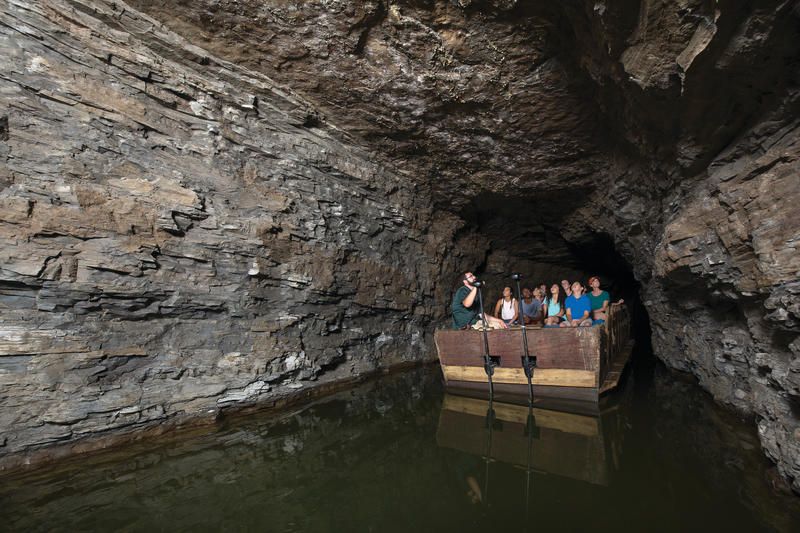
Photograph Courtesy of Destination Niagara
Beyond the falls themselves, there are attractions worth visiting in the surrounding towns. One of those is the Lockport Cave, a 2,100-foot-long water-power tunnel that was blasted out of solid rock in Lockport, New York. The roughly 70-minute walking tour and boat ride offered inside the cave takes visitors to explore the newly rehabilitated “Flight of Five” Erie Canal Locks 67-71 which were constructed in 1838 and the ruins of the tunnel which was constructed in the mid 1800s and led to invaluable industrial-era inventions. The tunnel was a hydraulic race used by the surrounding town for power, but genius engineer and inventor Birdsill Holly found other creative uses for it as well.
Throughout the late 19th-century Holly brought innovations to the city of Lockport including a fire protection system which made bucket brigades obsolete and a water supply system which eliminated the need for reservoirs. Holly’s fire protection system made use of fire hydrants which were able to pump water with enough force to travel several hundred feet into the flames. During his lifetime, Holly held over 150 patents.
Today visitors can see the remnants of this incredibly innovative industrial site from a unique perspective as you glide over the still waters of the more than 150 year old tunnel. Along the way you will see natural geological formations like stalactites among the artifacts left behind by underground workers. Tours are offered between May and October. They run every hour between 10:00am and 4:30pm during the summer months. You can see the full tour schedule and purchase your tickets here.

Maid of the Mist has been a must-do attraction at the falls for generations because it truly offers the best way to see the falls up close and experience that famous mist. You really do get soaking wet, so it is a great activity to do in the rain or sunshine. It was raining on our Maid of the Mist voyage and that made the experience even better since there were less people on the boat.
The Maid of the Mist has been sailing tourists into the shadow of the falls since 1846 when its side wheel steamboat made the first journey. Before then, only small rowboats were used to sail visitors around the water. Over the past 150 plus years the boats have evolved and grown in size and everyone from Princess Diana and Marilyn Monroe to President Jimmy Carter and the members of One Direction have taken a ride. Today the fleet is comprised of only two boats that set sail every fifteen minutes with a new batch of up to 600 passengers from May to November.
It is a one-of-a-kind experience to sail into the bend of Horseshoe Falls and have the rushing, roaring waters surround you as you become enveloped in the mist, a memory that is well worth the price of admission. Plus, you get to keep the blue poncho. On your way out, don’t forget to take advantage of the views from the top of the Observation Tower which extends out over Niagara Gorge at a height of nearly 300 feet, offering views of all three falls from the New York side. You can access the free Observation Tower even if you are not boarding the Maid of the Mist.
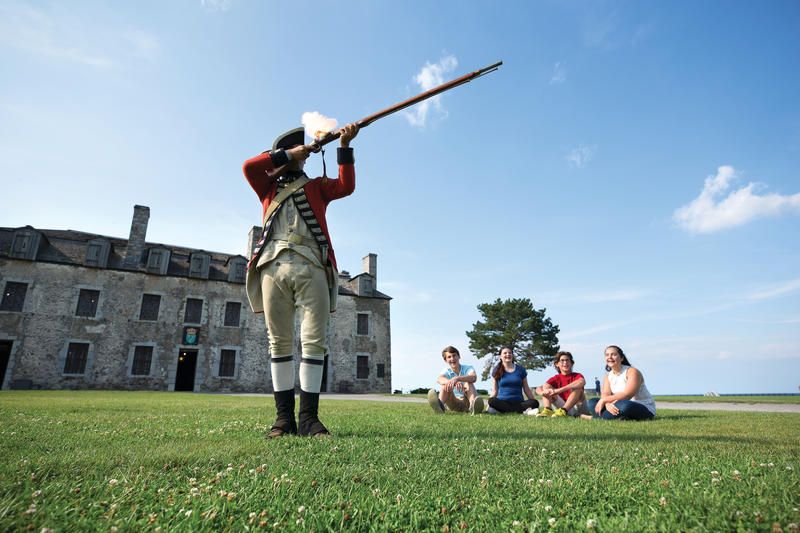
Photograph Courtesy of Destination Niagara
The site of Old Fort Niagara has a storied history which dates back to 1679 when the French built the first fortification, Fort Conti. The most impressive structure which remains at the site today is the “French Castle,” the permanent fortification built by the French in 1726. Three countries would claim dominion over the strategic site over the centuries. The French lost control to the British in 1759 during the French and Indian War and the British handed the fort over to the Americans in 1796 (though they recaptured it for a short time in 1813!).
The fort’s last active conflict was during the War of 1812 but it was subsequently used as a peaceful border post and as barracks and a training station for American soldiers during both World Wars. The army withdrew in 1963 and today, the U.S. Coast Guard remains as the last vestige of military presence. While the military was still present in the 1920s, older buildings on the campus began to badly deteriorate. A group of concerned citizens banded together to form the Old Fort Niagara Association in 1927 and went on to carry out multiple restoration projects on the historic properties.
Today the site operates as a museum, sprawling across twenty-three acres of land at the mouth of the Niagara River with fortifications, outworks, six 18th-century buildings, significant archaeological remains, and the early post cemetery. Along with the gorgeous views of the river you can take in from the grounds, there are living history programs where costumed actors re-enact historic scenes, guided and self-guided tours, and historic demonstrations as well as special events. Old Fort Niagara is located just under fifteen miles north of the falls and is one of the many stops on the convenient and free Discover Niagara Shuttle which runs every day between May and September.
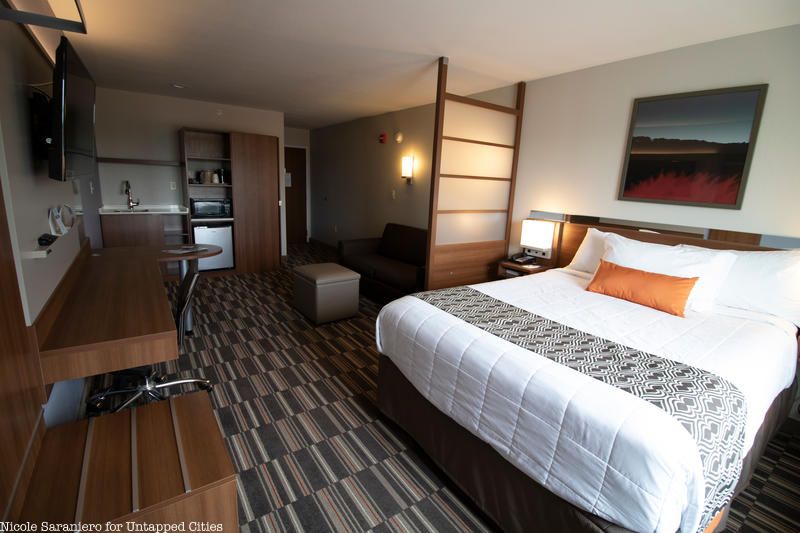
Located minutes from Niagara Falls State Park and just a half hour outside of the bustling city of Buffalo you will find a clean and comfy place to stay at the Microtel by Wyndham Niagara Falls. Microtel is an affordable hotel with a bed-and-breakfast feel courtesy of the pleasantly personable owners who make you feel welcomed whether you are a newcomer stopping in for the night or a returning customer coming back for a regular stay. All Microtels (there are more than 300 across America), are new construction and designed to be extremely efficient and environmentally conscious. One of the unique features of the brand is wall hung furniture in every room which offers guests a minimal modern aesthetic and reduces cleaning time for the staff. Our favorite feature was the cushioned window seat which hides the air conditioning unit while offering a fun place to rest.
A Microtel stay includes free breakfast and all important free Wi-Fi. What is great about this location is that it offers a free shuttle to the falls which runs regularly throughout the day and there is free parking if you bring your own car. Once you get to the falls you can connect with the free Discover Niagara Shuttle which takes you to seventeen attractions throughout the area, also for free, or the Niagara Falls Scenic Trolley which shuttles guests throughout the park for just $3.
Interested in exploring more of Western New York? Look out for upcoming Untapped Guide to Buffalo and check out more of our NYC Getaways here!
Subscribe to our newsletter